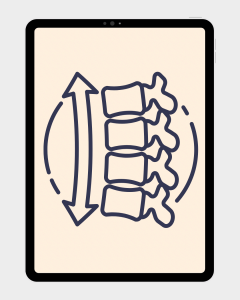
If you’re struggling with chronic back pain, herniated discs, or sciatica, spinal decompression therapy might be the relief you’ve been searching for. This non-invasive treatment has helped countless patients reduce pain, restore mobility, and improve their quality of life—without surgery or medication. In this blog post, we’ll explore what spinal decompression is, how it works, and why it’s become a go-to solution for many people dealing with spinal issues.
What Is Spinal Decompression?
Spinal decompression therapy is a non-surgical treatment designed to gently stretch the spine. This process relieves pressure on compressed discs and nerves, allowing herniated or bulging discs to retract and promoting the flow of healing nutrients into the affected area.
The therapy is typically performed on a specialized traction table controlled by a computer system. This allows precise adjustments to target specific areas of the spine, whether in the lower back (lumbar spine) or the neck (cervical spine).
Common Conditions Treated With Spinal Decompression
Spinal decompression can be an effective treatment for a variety of spine-related conditions, including:
-
Herniated or bulging discs
-
Degenerative disc disease
-
Sciatica (radiating leg pain)
-
Spinal stenosis
-
Facet syndrome
-
Pinched nerves
-
Chronic lower back or neck pain
If you’re experiencing any of these conditions, spinal decompression may offer a safe and effective path to long-term relief.
7 Key Benefits of Spinal Decompression Therapy
1. Pain Relief Without Surgery
One of the biggest advantages of spinal decompression is that it’s non-invasive. For many patients, it provides significant pain relief without the risks and downtime associated with back surgery.
2. Improved Disc Health
By creating negative pressure within the spinal discs, decompression therapy helps rehydrate and reposition discs, reducing pressure on nerves and encouraging long-term healing.
3. Enhanced Mobility and Function
Many patients experience a noticeable improvement in flexibility and range of motion, making it easier to return to daily activities and exercise.
4. Safe and Comfortable
Spinal decompression therapy is gentle, and most patients find it comfortable—even relaxing. Sessions are typically 15 to 30 minutes long, and there’s no downtime afterward.
5. Drug-Free Pain Management
This therapy offers a natural alternative to pain medications, which can come with side effects and risk of dependency.
6. Customizable Treatment
Each session can be tailored to your unique spinal condition, ensuring targeted care that adapts as you improve.
7. Support for Long-Term Spinal Health
Spinal decompression isn’t just about symptom relief—it’s also about addressing the root cause of spinal issues and supporting ongoing wellness.
What to Expect During Treatment
At your first visit, your chiropractor or healthcare provider will assess your spine and medical history to determine if spinal decompression is right for you. If you’re a good candidate, a personalized treatment plan will be developed. Most patients undergo a series of sessions over several weeks, depending on the severity of their condition.
